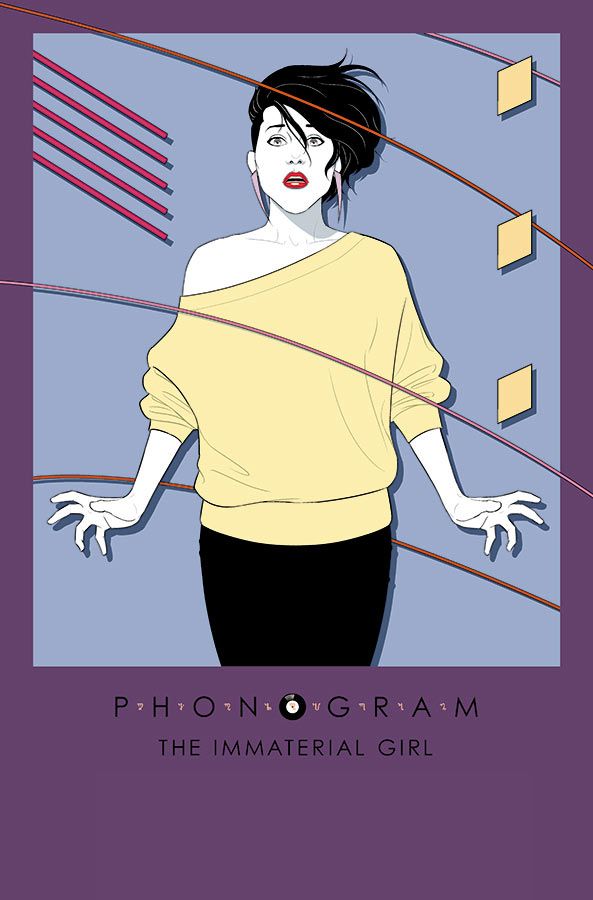I'd started to believe that we wouldn't see a third "Phonogram" series. It had been promised for some time by creators Kieron Gillen and Jamie McKelvie, who'd gone on to collaborate on books like "Young Avengers" and "The Wicked + The Divine." With the latter showing no signs of going away, though, I started to think that "Phonogram: The Singles Club" (seven brilliant issues set at the same party where each one can be read independently, but together mesh into a much larger story) was the series' last hurrah. Happily, I was wrong.
"Phonogram: The Immaterial Girl" #1 reintroduces us to Emily Aster, who -- as a small child named Claire -- was given the proverbial deal with the devil, or at least some other powerful being. The price was fairly simple: give up half of her personality. Claire sacrificed the self-destructive, despairing part of her soul, and Emily Aster was all that was left. Unfortunately for Emily, she clearly didn't read the fine print. Not only is Claire still alive in another realm, with the titular immaterial girl forever watching, but there was a loophole in the bargain, one with grave consequences for Emily.
Gillen's pacing in "Phonogram: The Immaterial Girl" #1 works well; he includes new information alongside old, so that new and returning readers alike are entertained. More importantly, he sets up the overall thrust of this miniseries in this first issue. All of the pieces are carefully assembled: Emily/Claire's deal, the idea behind phonomancers and their society, Emily's current life, the status of Claire and more. As a result, when everything kicks into high gear and the loophole is suddenly exploited, the readers quickly understand just how dangerous this situation is. Emily isn't just in a bad place; it's potentially deadly. And as for the real world? Well, it becomes very clear that Claire's presence is not a good thing.
The musical references in this issue start on the cover between the title and the art, and they blast their way through the entire comic. Gillen is kind enough to give us a glossary at the end of the issue, but I must admit that it's fun to try and see how many you recognize. (I, for one, adore Seth Bingo's shirt referencing the changing line-up of the Sugababes.) Gillen spent some time as a music journalist and, as strange as it may sound, "Phonogram" could easily lead you to some great new-to-you Britpop acts. Consider it an added bonus.
Unsurprisingly, McKelvie's art is excellent. His ability to draw the human form in a natural and realistic way is enviable; it grounds the characters in a way that makes them relatable because you see pieces of people you know inside of them. When the fantastic roars to life around them, it ends up having an extra punch, too; the sudden assault on Emily when things go south is dramatic in part because it's the unreal forcing its way into an otherwise very real situation. The best part about the issue's art, though, is the world behind the screen. Anyone who's ever seen a certain iconic music video will love what Gillen and McKelvie have dreamed up here; it's a brilliant homage for a comic book to use, and McKelvie completely nails its look.
If that's not enough, there are two short back-up stories, too. In the first, Sarah Gordon's art is dark and flows across the page in a way that early art from Sophie Campbell did. It's a striking look and I'd like to see more from Gordon down the line. I also had no idea that letterer Clayton Cowles was an artist, but he gets the last page in the issue, which is suitably humorous with a slightly exaggerated style, but which still nails its punch line thanks to some great facial expressions on two of the characters.
It's great to see "Phonogram" return and, with "The Wicked + The Divine" being such a hit for Gillen and McKelvie, hopefully some of those readers will give "Phonogram: The Immaterial Girl" #1 a whirl. It's worth their time, and yours, too.

